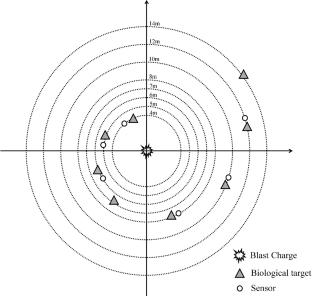Prediction model for the risk of auditory and vestibular disfunction caused by a blast wave
Abstract
Blast deafness and balance disorders are common consequences of modern warfare and terrorist actions. A predictive evaluation system can assist commanders in quickly gathering information on the incapacitation of combat personnel. However, a critical challenge to this goal was to clarify the dose–response relationship between the blast parameters and the severity of auditory and vestibular dysfunction. This paper describes the algorithms for a prediction model. We performed blast experiments to obtain data on animal auditory/vestibular dysfunction under different overpressures. Peak overpressure and positive phase duration of the blast wave were obtained by pressure measurements. The severity of auditory and vestibular dysfunction was established by the auditory brainstem response test, behavioral rating, and vestibular-evoked myogenic potentials tests. Test data were analyzed using receiver operating characteristic (ROC) curves and logistic regression analysis to obtain the overpressure limits for auditory/vestibular function and logistic regression curves for severity separately. The ROC curve analysis showed that the overpressure limit for the auditory function was 32.635 kPa and the vestibular function was 96.275 kPa. Logistic regression fitted curves illustrated the dose–response relationship between the coefficient K, normalized by peak overpressure and positive phase duration, and the risk probability of auditory and vestibular disfunction. The prediction model for the risk of auditory and vestibular disfunction severity (mild/moderate/severe) has been established based on the overpressure limit and dose–response relationship.



 求助内容:
求助内容: 应助结果提醒方式:
应助结果提醒方式:


